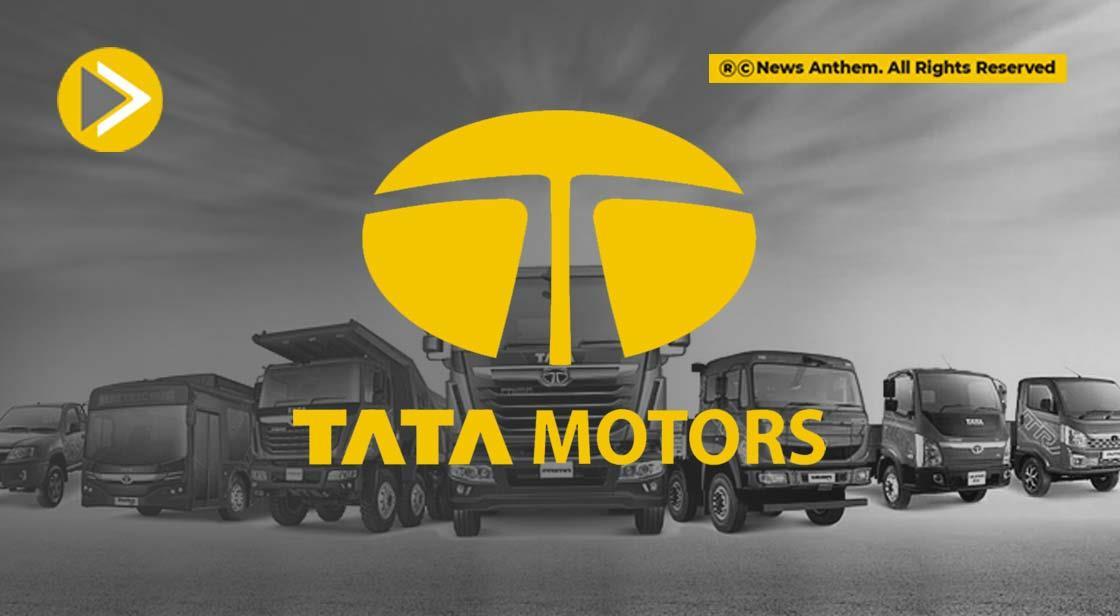Tata Motors Demerger: 5 Key Developments Every Investor Should Know

News Synopsis
Tata Motors is undergoing a significant corporate restructuring, breaking into two distinct listed entities. This strategic demerger aims to streamline operations by separating the passenger vehicle (including EV and JLR) and commercial vehicle businesses.
Five Key Updates on Tata Motors Demerger
Tata Motors Chairman’s Vision: “Sharper focus, faster growth”
In the 80th Integrated Annual Report, Tata Sons Chairman N. Chandrasekaran described the demerger as a pivotal step in the company’s transformation journey.
“This separation will give each business the strategic clarity and agility it needs,” he said, noting that operating under a single umbrella no longer fits as ICE cars, EVs, JLR, and trucks “operate in very different worlds.”
He further emphasized three expected outcomes:
-
Customer value: Distinct teams can fine-tune offerings for specific buyer segments, from commercial truck fleets to premium EV users.
-
Employee opportunity: “Rewarding careers at every level of the organisation” as leadership paths grow within independent units.
-
Shareholder returns: Independent capital decisions and cleaner financials could “unlock hidden value” and attract global investors.
“We are stepping into FY26 with confidence in our strategy, the strength of our execution, and the belief in our people,” Tata Sons Chairman N. Chandrasekaran added, while cautioning about “volatile global trade conditions” and “uneven EV adoption.”
How Tata Motors Will Split Post-Demerger
The demerger will result in two separately traded stocks, both with a face value of Rs 2:
🔸 Tata Motors Passenger Vehicles (TMPV)
-
Includes: ICE cars, EVs, and Jaguar Land Rover.
🔸 Tata Motors Commercial Vehicles (TMLCV)
-
Includes: Trucks, buses, and spares.
Share Allocation: Every shareholder will get 1 TMLCV share for every Tata Motors share, while retaining ownership in TMPV.
Massive Shareholder Support for Demerger
Earlier this year, Tata Motors shareholders overwhelmingly approved the proposal with 99.9995% votes in favour.
Out of 2.73 billion shares, less than 14,000 voted against the move, showing strong investor trust in the company’s restructuring.
Q4 FY25 Financials and Dividend Update
Tata Motors reported a net profit of Rs 8,556 crore for the quarter ending March 2025, a 51% drop from Rs 17,528 crore year-on-year.
Despite the decline, the company sweetened the deal for investors by announcing a dividend of Rs 6 per share, payable on or before June 24, 2025.
-
FY25 Total Revenue: Rs 4.40 lakh crore
-
FY24 Total Revenue: Rs 4.34 lakh crore
Tata Motors Share Price Performance
-
Last 5 sessions: Down by 2%
-
One-month basis: Gained nearly 7%
-
Six-month period: Down 8%
-
Year-on-year: Declined around 25%
As per the latest update, Tata Motors’ market cap stands at Rs 2.64 lakh crore. The stock has seen a 52-week high of Rs 1,179 and a 52-week low of Rs 535.75 per share.
History of Tata Motors
Tata Motors Limited is an Indian multinational automotive manufacturing company headquartered in Mumbai, India, and is a subsidiary of the Tata Group. Its journey from a locomotive manufacturer to a global automotive powerhouse is marked by strategic partnerships, ambitious indigenous developments, and landmark international acquisitions.
Early History and Diversification of Tata Motors (1945-1990s):
-
1945: Formation as TELCO: The company was established in 1945 as Tata Engineering and Locomotive Co. Ltd. (TELCO). Its initial focus was on manufacturing locomotives and other engineering products.
-
1954: Entry into Commercial Vehicles: A pivotal shift occurred when Tata Motors entered the automotive industry by forming a collaboration with Daimler-Benz AG (now Mercedes-Benz) to manufacture medium commercial vehicles. The first commercial vehicle, the TMB 312 truck, was launched in 1954, marking its entry into the commercial vehicle market. This partnership ended in 1969.
-
1960s-1980s: Growth in Commercial Vehicles: TELCO steadily grew its commercial vehicle operations, becoming a dominant player in India's trucking and bus segments. Key milestones include:
-
1983: Commenced manufacturing of heavy commercial vehicles.
-
1986: Launched the Tata 407, a light commercial vehicle that became highly popular.
-
Entry into Passenger Vehicles and Indigenous Development (1991-2007):
-
1991: Tata Sierra: Tata Motors made its debut in the passenger vehicle market with the launch of the Tata Sierra, India's first indigenous SUV.
-
1994: Tata Sumo: The company released the Tata Sumo, a multi-utility vehicle that gained significant popularity.
-
1998: Tata Indica: A defining moment came with the unveiling of the Tata Indica at the Geneva Motor Show. This was India's first indigenously developed passenger car, designed and manufactured entirely in India. Despite initial skepticism from some analysts, its fuel efficiency and aggressive marketing made it a bestseller in the Indian market.
-
2002: Tata Indigo: Following the Indica's success, Tata Motors introduced the Tata Indigo, a fully indigenous sedan.
-
2005: Tata Ace: The launch of the Tata Ace, India's first mini-truck (often called "Chota Hathi"), revolutionized intra-city logistics and last-mile distribution, becoming a massive commercial success.
Global Expansion and Landmark Acquisitions of Tata Motors (2004-Present):
-
2004: Acquisition of Daewoo Commercial Vehicle: Tata Motors made its first major international acquisition by acquiring the truck manufacturing operations of Daewoo Motors in South Korea. This move significantly expanded its global footprint in the commercial vehicle sector.
-
2008: Acquisition of Jaguar Land Rover (JLR): This was a transformative acquisition for Tata Motors. Amidst the global financial crisis, Tata Motors acquired the iconic British luxury car brands Jaguar and Land Rover from Ford Motor Company for US$2.3 billion. This acquisition propelled Tata Motors onto the global stage, establishing it as a prominent player in the premium and luxury vehicle segments. Under Tata's ownership, JLR has seen significant product development and a turnaround in its fortunes.
-
2009: Tata Nano: Tata Motors launched the Tata Nano, famously marketed as "the world's least expensive car" at a price of around ₹100,000 (US$2,500 at the time). While initially generating immense buzz, its sales declined over the years due to various factors.
-
Focus on EVs and "New Forever" Philosophy (2017-Present):
-
2017: Launched Tata Nexon and Tigor EV, marking its early steps into the electric vehicle market.
-
2019: Introduced Ziptron EV technology, a proprietary electric powertrain technology.
-
2020: Launched the Nexon EV, which quickly became India's most popular electric vehicle, setting a new benchmark for EVs in the country with its range, technology, and competitive pricing. Tata Motors also introduced the 'New Forever' range of passenger vehicles, signaling a commitment to new design, safety, and technology.
-
Ongoing EV Expansion: Tata Motors is now a leader in India's electric passenger vehicle market, continuously expanding its EV portfolio with models like the Punch EV, Tiago EV, and Tigor EV, and planning further launches including the Curvv EV and Sierra EV.
-
Ford India Plant Acquisition (2022): Tata Motors' subsidiary, Tata Passenger Electric Mobility Limited (TPEML), signed an agreement with Ford India Private Limited to acquire its manufacturing plant in Sanand, Gujarat, to expand its production capacity for electric vehicles.
-
Final Thoughts: What Lies Ahead?
The Tata Motors demerger marks a transformative step aimed at creating leaner, focused businesses in both passenger and commercial segments. With nearly unanimous shareholder support, a long-term vision laid out by Chandrasekaran, and strategic clarity in business lines, the restructuring could unlock substantial value. Though short-term stock fluctuations may persist, the long-term benefits for customers, employees, and investors seem promising—especially as Tata Motors gears up for FY26 with a confident roadmap.









